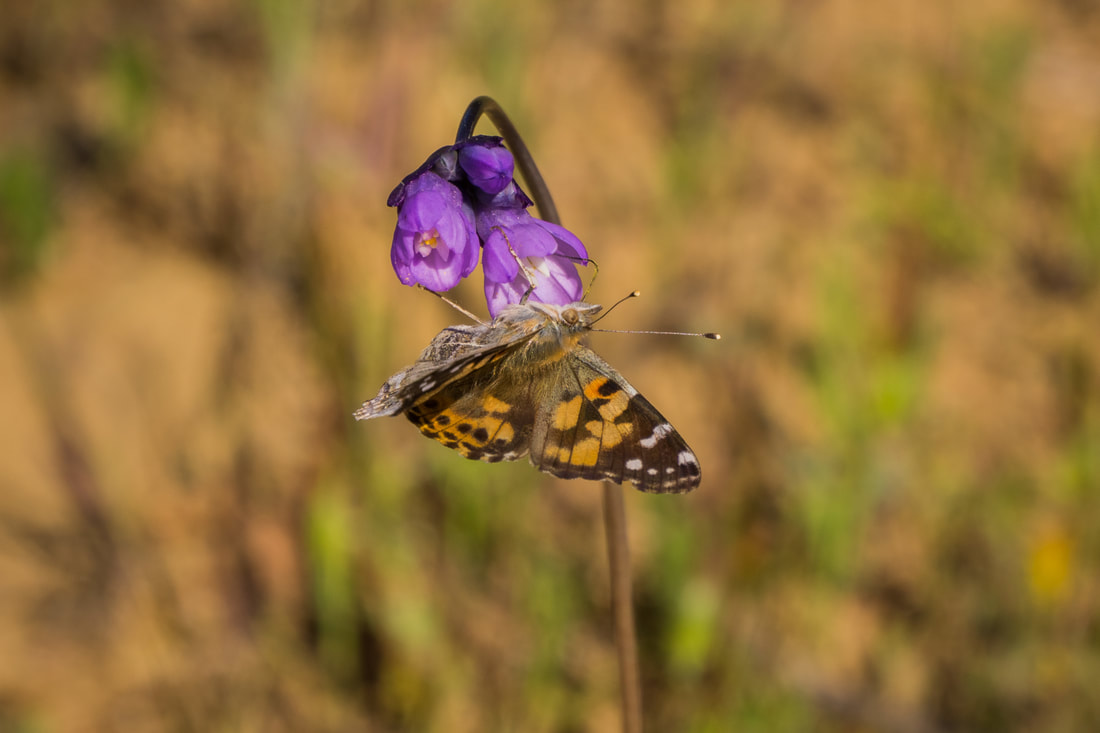Columbian black-tailed deer (O.h. columbianus)
create a wildlife corridor from the FB headlands north to MacKerricher
|
Some may view the area behind the fences on the mill site as an asphalt and concrete wasteland containing scattered ponds filled with toxins. However, as is oft quoted, ‘nature abhors a vacuum,’ and there are many plants and animals already occupying the area abandoned by GP. Nonetheless, the diversity and richness of this area is not reaching its potential, and there are many nonnative species.
We are advocating for land management and zoning that doesn’t just relegate ‘open space’ to those areas where development is prohibited. Rather, open space should be planned as carefully as other zoning, with the understanding that whatever is allocated will determine what will thrive there and what will not. Fragmented habitats with lots of edges, as is currently proposed, support invasive non-native plants that do well in disturbed areas, like those just outside development zones and along roads. A large central area of open space will allow for more natural and complex habitats to develop. But this open space will be an isolated ecosystem unless it is linked to other, larger natural habitats. The wildlife corridor being proposed for the mill site will connect the habitat area there with habitats and ecosystems to the north. In particular, access to the Pudding Creek watershed is critical for the overall health of the mill site. This wildlife corridor also has the potential to link to the Virgin Creek watershed, MacKerricher, and even the Ten Mile River watershed. Wildlife corridors are typically linear areas of land designed to provide a connection between habitat areas. Given the space constraints on the mill site and disturbance from human activity to the west and to the east, the proposed corridor will likely only serve as a link to larger habitats to the north, rather than as on site habitat. However, it still needs to provide enough security to accommodate movement. The recommended minimum width of this type of wildlife corridor is about 820 ft (250 meters). Of course that is not politically feasible on the north side of the headlands, but 150 feet from the property line is too narrow. The maximum recommended length is approximately 0.6 mile (1 kilometer), which is close to the distance from the open space area to the Pudding Creek watershed. The exact dimension and design of the wildlife corridor on the mill site should be determined by a qualified and unbiased wildlife biologist, who can identify the needs of the species traversing it. For more information about wildlife corridors, refer to the following online resources:
Principles of Wildlife Corridor Design: https://www.biologicaldiversity.org/publications/papers/wild-corridors.pdf Determining Corridor Width: https://conservationcorridor.org/2015/01/determining-corridor-width/ USDA/NRCS Animal Enhancement Activity – Wildlife Corridors: https://www.nrcs.usda.gov/Internet/FSE_DOCUMENTS/nrcs141p2_021599.pdf Important Criteria and Parameters of Wildlife Movement Corridors – a Partial Literature Review: http://www.silvafor.org/assets/silva/PDF/Literature/LandscapeCorridors.pdf Guidelines for Designing Wildlife Corridors (With Statistics): http://www.biologydiscussion.com/articles/guidelines-for-designing-wildlife-corridors-with-statistics/2067 The Theory of Wildlife Corridor Capability: http://michaelsoule.com/resource_files/116/116_resource_file1.pdf] For references about this paragraph and others, see for example Pimental et al. 1997 “Economic and Environmental Benefits of Biodiversity”, Hernández-Morcillo et al. 2013. “An Empirical Review of Cultural Ecosystem Service Indicators”, and Gascon et al. 2015. “The Importance and Benefits of Species.”
|
Gray fox (taken at Coyote Hills Regional Park, which consists of 1,266 acres of marshland and rolling grassland covered hills, located on the eastern shore of SF Bay, northwest of Fremont). Photo: Eugene Kim
Sanderlings (Calidris alba)
Northern red-legged frog
One of the painted ladies migrating north (vanessa cardui)
A quick summary article: https://www.nrcs.usda.gov/Internet/FSE_DOCUMENTS/nrcs141p2_021599.pdf
Nice analysis of criteria for corridors (plus some alternative models like stepping-stone habitats): http://www.silvafor.org/assets/silva/PDF/Literature/LandscapeCorridors.pdf Has some of the same info as the links above, and also discusses land use adjacent to corridors: http://www.biologydiscussion.com/articles/guidelines-for-designing-wildlife-corridors-with-statistics/2067 A blast from the past! An article written by Soule and Gilpin from UCSD (brings back memories of seminars I attended): http://michaelsoule.com/resource_files/116/116_resource_file1.pdf Some good background info with criteria for design: http://biosphereinstitute.org/wp-content/uploads/2015/01/BCEAG-Wildlife-Corridor-1999.pdf Interesting discussion about impact of housing density (mostly focused on birds, but with a summary of relevant studies): https://www.webpages.uidaho.edu/~gaustin/pdf/MultiFunctionalEcoCorridors.pdf Excellent analysis. I like this statement, "Width to length is more important than width alone, and design and quality can be just as important.” Here’s the link: https://depts.washington.edu/open2100/pdf/2_OpenSpaceTypes/Open_Space_Types/habitat_corridors.pdf |




